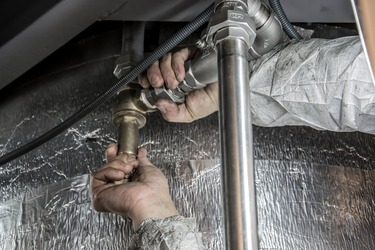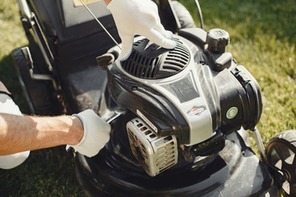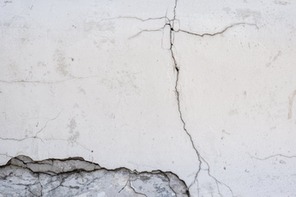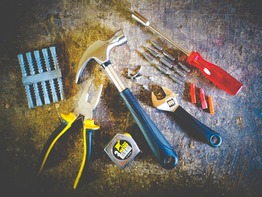- Local.Repair
- Blog
- Fixing Common Plumbing Issues: A Homeowner's Guide
Fixing Common Plumbing Issues: A Homeowner's Guide

Introduction: Understanding Basic Plumbing Issues
Plumbing issues can be a common occurrence in any home, and knowing how to address these problems can save you time and money. Understanding the basic plumbing issues that may arise can help you troubleshoot and possibly fix the problem yourself. From leaky faucets to clogged drains, knowing how to handle these issues can make a big difference in maintaining your home's plumbing system.
Leaky Faucets: How to Stop the Drip
A leaky faucet can be a nuisance and waste water if not addressed promptly. To stop the drip, first, shut off the water supply to the faucet. Next, disassemble the faucet handle and replace the worn-out washer or O-ring. If you are not comfortable with this task, a plumber can easily fix the issue for you. Don't let the drip continue, as it can lead to more serious plumbing problems down the line.
Clogged Drains: Tips for Clearing Blockages
Clogged drains are another common plumbing issue that homeowners face. To clear a blockage, try using a plunger or drain snake to remove the obstruction. You can also use a mixture of baking soda and vinegar to break down the clog. If these methods do not work, it may be necessary to call a professional plumber to help clear the drain.
Low Water Pressure: Troubleshooting Solutions
Low water pressure can be frustrating, especially when trying to shower or wash dishes. Check for any leaks in the plumbing system and ensure that the shut-off valves are fully open. You may also need to clean the aerator on your faucet or replace any clogged pipes. If the issue persists, it could be a problem with the water supply line, and a plumber may need to be called to diagnose and fix the issue.
Running Toilets: Steps to Fix the Problem
A running toilet can waste a significant amount of water and increase your water bill. To fix this issue, first, check the flapper and fill valve in the toilet tank. Adjust or replace these parts as needed to stop the constant flow of water. In some cases, the issue may be due to a faulty float valve, which may need to be replaced. If these steps do not resolve the problem, a plumber may need to be consulted.
Frozen Pipes: Preventing and Thawing
Frozen pipes can lead to burst pipes and costly water damage. To prevent freezing, insulate any exposed pipes and keep the temperature in your home above freezing. If you suspect a pipe is frozen, do not use an open flame to thaw it. Instead, use a hairdryer or hot water to slowly thaw the pipe. If a pipe has burst, shut off the water supply immediately and call a plumber for repairs.
Water Heater Troubles: Common Fixes
Water heater issues can range from no hot water to strange noises coming from the tank. To troubleshoot these problems, check the thermostat setting, pilot light, and pressure relief valve on the water heater. Sediment buildup in the tank may also be causing issues and can be flushed out to improve performance. If you are unsure how to address these problems, a professional plumber can help diagnose and repair any water heater issues.
Broken Seal: Repairing a Toilet
If you notice water leaking around the base of your toilet, it may be due to a broken seal. To repair the seal, first, turn off the water supply to the toilet. Remove the toilet and replace the wax ring seal. Make sure to properly reattach the toilet and secure it in place. If you are not comfortable with this task, a plumber can assist in repairing the broken seal for you.
Toilet Won’t Flush: Addressing the Issue
If your toilet won't flush properly, there may be a clog in the trap or drain pipe. Use a plunger to try and clear the obstruction, or use a toilet auger to break up the clog. If the issue persists, check the water level in the tank and adjust if necessary. It may also be a problem with the flapper or fill valve, which may need to be adjusted or replaced. If the toilet still won't flush, a plumber may need to be called for further diagnosis and repair.
Slow Draining Sink: Strategies for Improvement
A slow-draining sink can be caused by a buildup of hair, soap scum, or food debris in the drainpipe. To improve drainage, try using a plunger or drain snake to clear the blockage. You can also try pouring hot water down the drain or using a mixture of baking soda and vinegar to break down the clog. If these methods do not work, a plumber may need to be consulted to address the slow-draining sink issue.
===
Being knowledgeable about common plumbing issues and how to address them can save you time, money, and frustration in the long run. While some problems can be easily fixed by homeowners, others may require the expertise of a professional plumber. By following these tips and strategies for fixing common plumbing issues, you can help maintain your home's plumbing system and prevent more significant problems from occurring. Regular maintenance and timely repairs can help ensure a well-functioning plumbing system and a comfortable living environment for you and your family.




